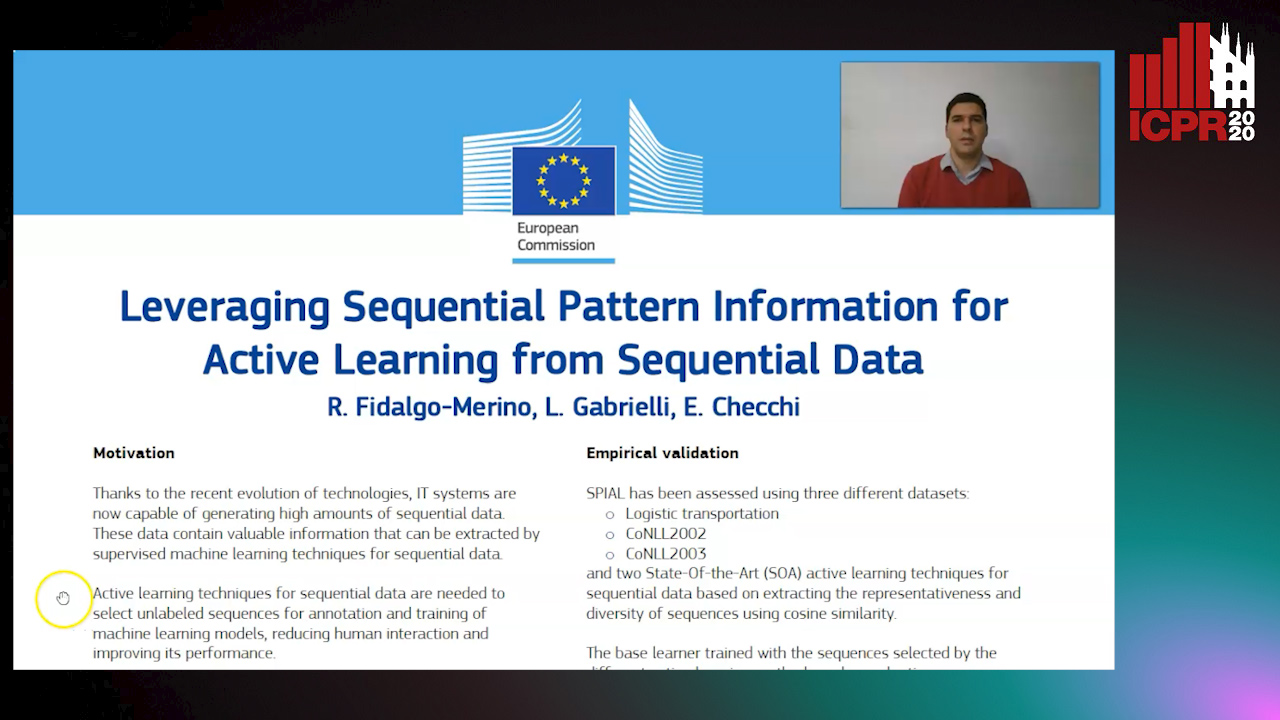Lorenzo Gabrielli
Paper download is intended for registered attendees only, and is
subjected to the IEEE Copyright Policy. Any other use is strongly forbidden.
Papers from this author
Leveraging Sequential Pattern Information for Active Learning from Sequential Data
Raul Fidalgo-Merino, Lorenzo Gabrielli, Enrico Checchi

Auto-TLDR; Sequential Pattern Information for Active Learning
Abstract Slides Poster Similar
This paper presents a novel active learning technique aimed at the selection of sequences for manual annotation from a database of unlabelled sequences. Supervised machine learning algorithms can employ these sequences to build better models than those based on using random sequences for training. The main contribution of the proposed method is the use of sequential pattern information contained in the database to select representative and diverse sequences for annotation. These two characteristics ensure the proper coverage of the instance space of sequences and, at the same time, avoids over-fitting the trained model. The approach, called SPIAL (Sequential Pattern Information for Active Learning), uses sequential pattern mining algorithms to extract frequently occurring sub-sequences from the database and evaluates how representative and diverse each sequence is, based on this information. The output is a list of sequences for annotation sorted by representativeness and diversity. The algorithm is modular and, unlike current techniques, independent of the features taken into account by the machine learning algorithm that trains the model. Experiments done on well-known benchmarks involving sequential data show that the models trained using SPIAL increase their convergence speed while reducing manual effort by selecting small sets of very informative sequences for annotation. In addition, the computation cost using SPIAL is much lower than for the state-of-the-art algorithms evaluated.